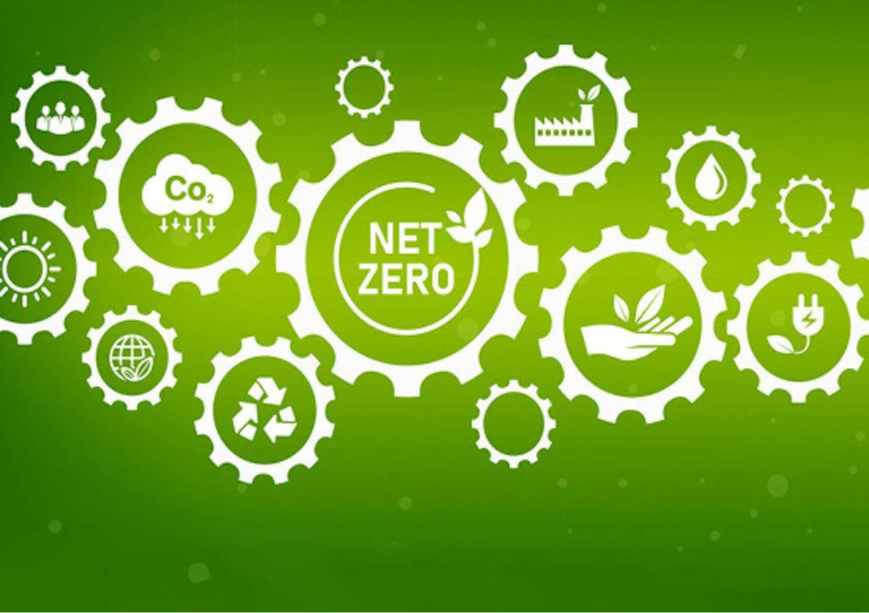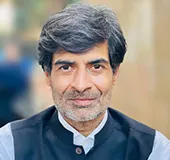
At COP26, India set itself the ambitious target of achieving net zero carbon emissions by 2070. Fulfilling this target will require critical sectors such as power, industry, and transport to switch from current production methods to low-carbon technologies. To help manage the economic growth and minimise the negative impact on businesses and the public.
In essence, the net-zero target presents itself as India’s biggest infrastructure and employment generation opportunity for the next 50 years. As per some estimates, solar and wind installations will need to grow 70 times from current levels to reach 7,700 GWs to achieve net zero by 2070. In addition to this, the country will need to build infrastructure to support 114 MMTPs of green hydrogen production. Estimates for this asset buildup place the costs of transitions for electricity, industries, and transportation at over US$ 10.1 trillion. However, current capital sources are sufficient to cover asset buildup valued at US$ 6.6 trillion, leaving a deficit of US$ 3.5 trillion.
The net-zero target presents itself as India’s biggest infrastructure and employment generation opportunity for the next 50 years.
Therefore, the magnitude of the asset buildup and the management of the human aspects of the transition will pose the most significant challenge and opportunity for India's economy in the coming decades. Finance will be critical in this aspect as the country needs an average mobilisation of over US$ 200 billion annually for the next 50 years. Not just the scale but also the delivery of the finance to these sectors will decide the eventual pace of decarbonisation.
We suggest six steps that could aid in achieving this scale of finance. Essentially, financing will depend upon a three-step function of raising capital, deploying it (e.g., making loans) and collecting it back (e.g., recovery of the principal and interest). Each of our suggestions aims to solve some key problems within this three-step financing process.
The first step should be to notify sectoral targets, if possible, all the way up to 2070 and create an aligned taxonomy for achieving the same. The taxonomy would allow financiers to understand the funding potential of projects and mitigate the transition risk by answering what’s green and what’s not. Such a step could also help augment the capital-raising ability of financial institutions and corporates as they can tap lines of credit that are aligned to these targets for e.g., green or transition bonds.
The taxonomy would allow financiers to understand the funding potential of projects and mitigate the transition risk by answering what’s green and what’s not.
The second step entails leveraging public funds to mitigate lending risks and enhance the accessibility of finance at competitive rates, particularly for emerging business models and innovative technologies. This step is particularly important for a financial system which is shifting from financing fossil fuels to new age low-carbon technologies. By using de-risking structures, financial institutions can feel more comfortable deploying loans into new-age and green businesses with unique requirements and limited credit histories. For instance, electric vehicles (EVs) are expensive upfront, and bankers may have a limited understanding of the technology, leading to conservative lending practices. Credit guarantees at attractive rates can both help alleviate these concerns and allow for deeper financing penetration.
Third, like China, which today houses four of the largest five banks in the world, India should look at building massive banks and infra-debt funds that could allow for improved finance availability for mega RE, green hydrogen and other infrastructure projects marked by long gestation period to be built at a pace not seen in the past.
Fourth, the country could moot the greater participation of the foreign banks, which could bring in the much-needed foreign capital as well as take the currency risk, to finance the asset buildup in the country. This will require greater coordination among policymakers and regulators, often a rarity in India, to identify the key bottlenecks that have led to many foreign banks shutting shop in the country or getting reduced to fringe players in the lending ecosystem of the country.
Fifth, deepening the bond market and boosting other refinancing instruments will help create a greater flow of debt capital towards greenfield projects in the country by freeing up the books of debt providers like banks.
India must increasingly leverage its growing global influence to drive reforms in the international financial system, which currently obstructs the flow of climate finance beyond the developed world.
Sixth, to address the quantum challenge, public money could be used to incentivise foreign investors to make investments, who at present shy away from the country since investments are inherently expensive owing to currency hedge costs, in green projects in the country.
Finally, domestic and currently available foreign sources alone will not be sufficient to meet this financial challenge. India must increasingly leverage its growing global influence to drive reforms in the international financial system, which currently obstructs the flow of climate finance beyond the developed world. Specifically, expediting the reform agenda of Multilateral Development Banks (MDBs) prioritised during the Indian G20 presidency is essential. These entities must now be equipped to better utilise their resources to mitigate risks associated with private climate investments in the Global South. India must also better utilise plurilateral groupings such as the BRICS to address specific challenges. This includes establishing a dedicated pool of capital aimed at lowering the costs of green financing and fixing flaws in the credit rating systems that continue to be biased against the EMDEs.
Vaibhav Pratap Singh is the Executive Director of the Climate and Sustainability Initiative.
Samir Saran is the President of the Observer Research Foundation.
The views expressed above belong to the author(s). ORF research and analyses now available on Telegram! Click here to access our curated content — blogs, longforms and interviews.




 PREV
PREV




